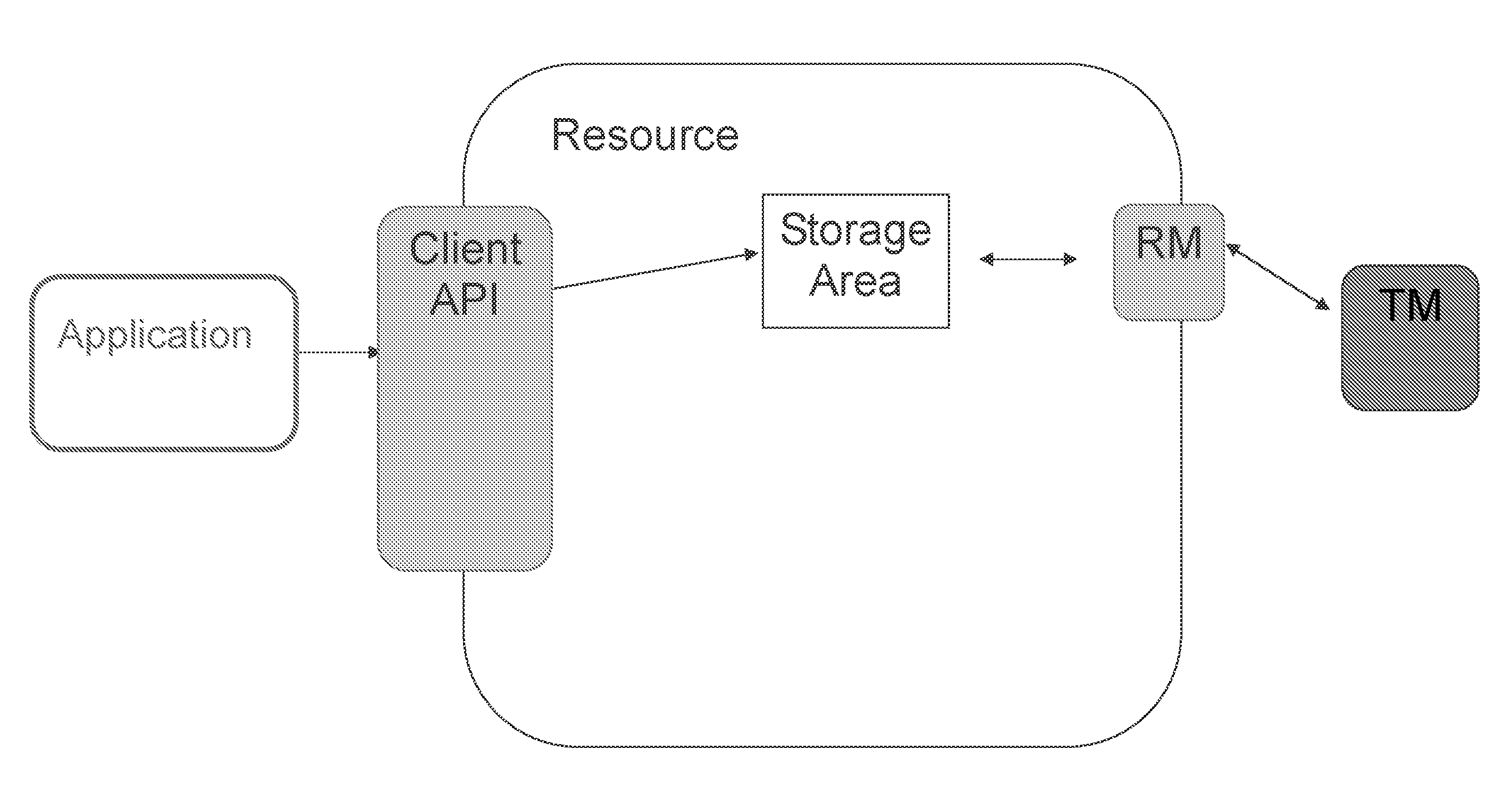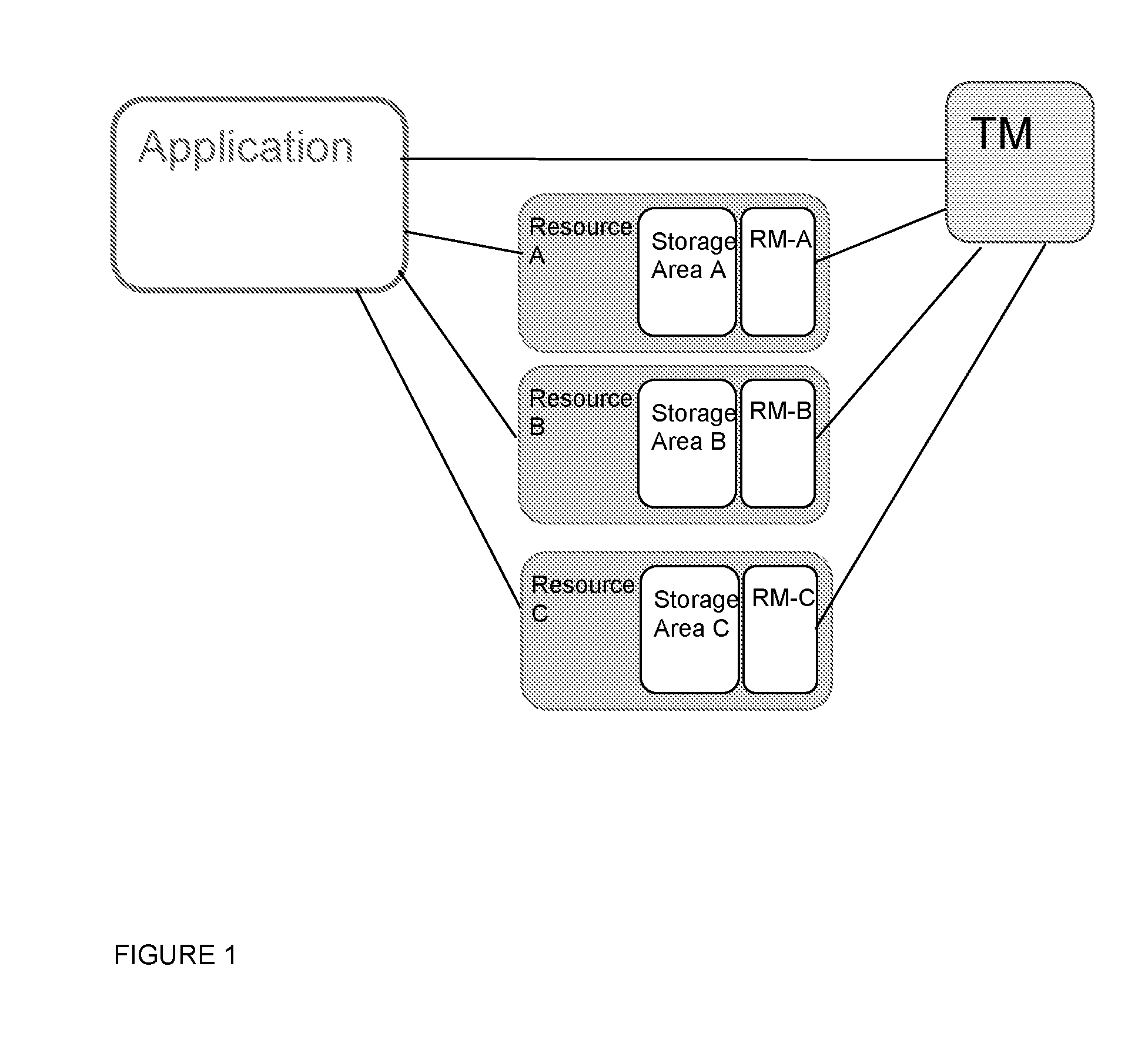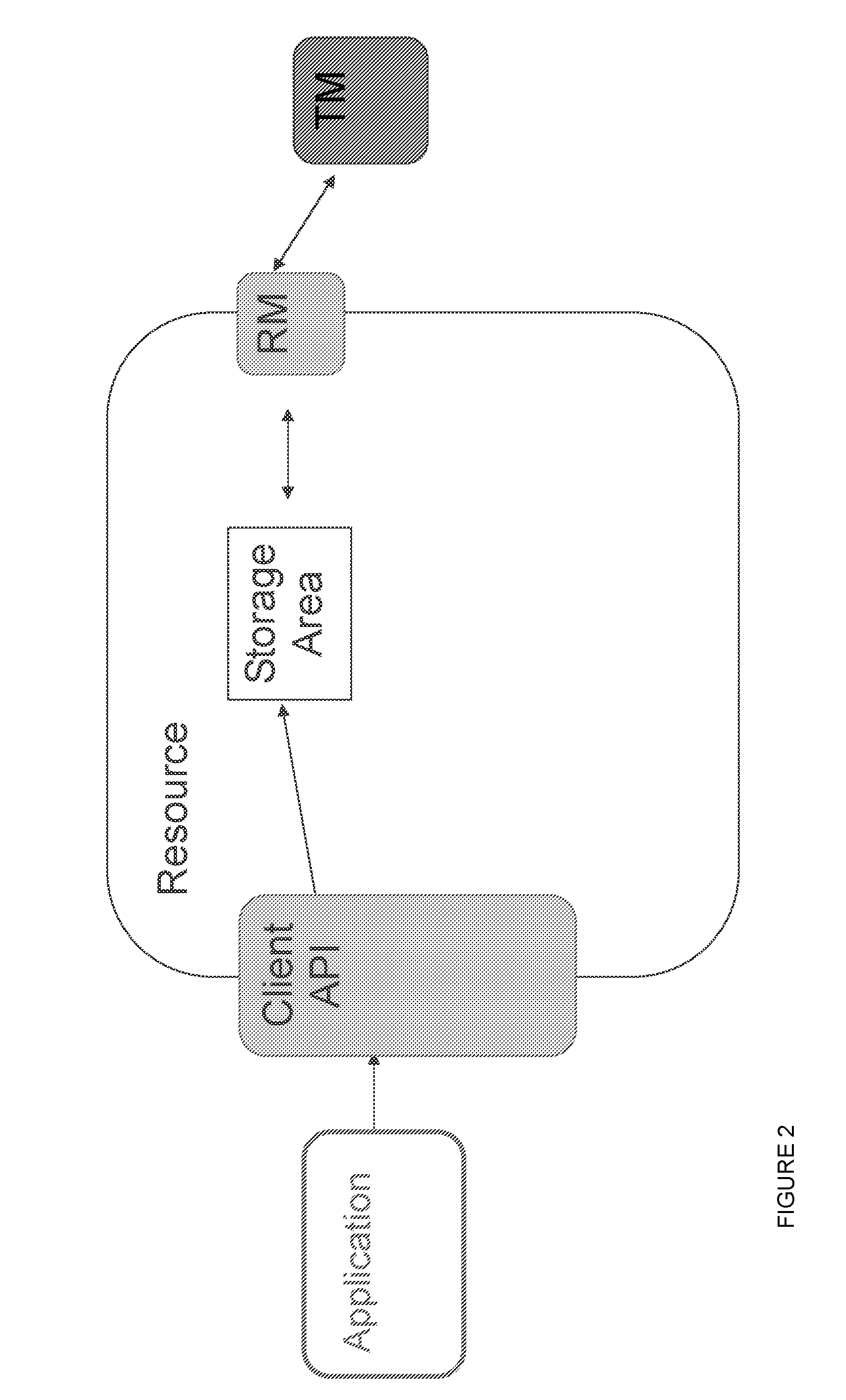Combining scalability across multiple resources in a transaction processing system having global serializability
serialization technology, applied in the field of combining scalability across multiple resources in a transaction processing system having global serialization, can solve the problems of not being resilient to all possible failure configurations, complex replication process, time and computer resources, etc., and achieves high scalability and low storage space. , the effect of low storage area
- Summary
- Abstract
- Description
- Claims
- Application Information
AI Technical Summary
Benefits of technology
Problems solved by technology
Method used
Image
Examples
Embodiment Construction
[0117]FIG. 6 shows a first embodiment of the present invention in simplified form, comprising a database system in which transactions or changes to entries in the database resulting from operations of the Application are controlled by a Transaction Manager (TM) or Transaction Co-ordinator and multiple Resource Managers (RMs). The TM co-ordinates multiple RMs into a single “global” transaction. The Application communicates with each Resource and also with the TM. This may be by way of APIs and / or a protocol. The Application may be considered as a program that uses and manipulates the entries in the database, with the database internally distributing the entries across multiple Resources. In contrast to the database system of FIG. 1, there is additionally provided a dispatch function (indicated here as Resource-Dispatch) between the Application and the Resources. The dispatch function directs transactions from the Application to the appropriate Resource(s) on the basis of the content ...
PUM
 Login to View More
Login to View More Abstract
Description
Claims
Application Information
 Login to View More
Login to View More - R&D
- Intellectual Property
- Life Sciences
- Materials
- Tech Scout
- Unparalleled Data Quality
- Higher Quality Content
- 60% Fewer Hallucinations
Browse by: Latest US Patents, China's latest patents, Technical Efficacy Thesaurus, Application Domain, Technology Topic, Popular Technical Reports.
© 2025 PatSnap. All rights reserved.Legal|Privacy policy|Modern Slavery Act Transparency Statement|Sitemap|About US| Contact US: help@patsnap.com



